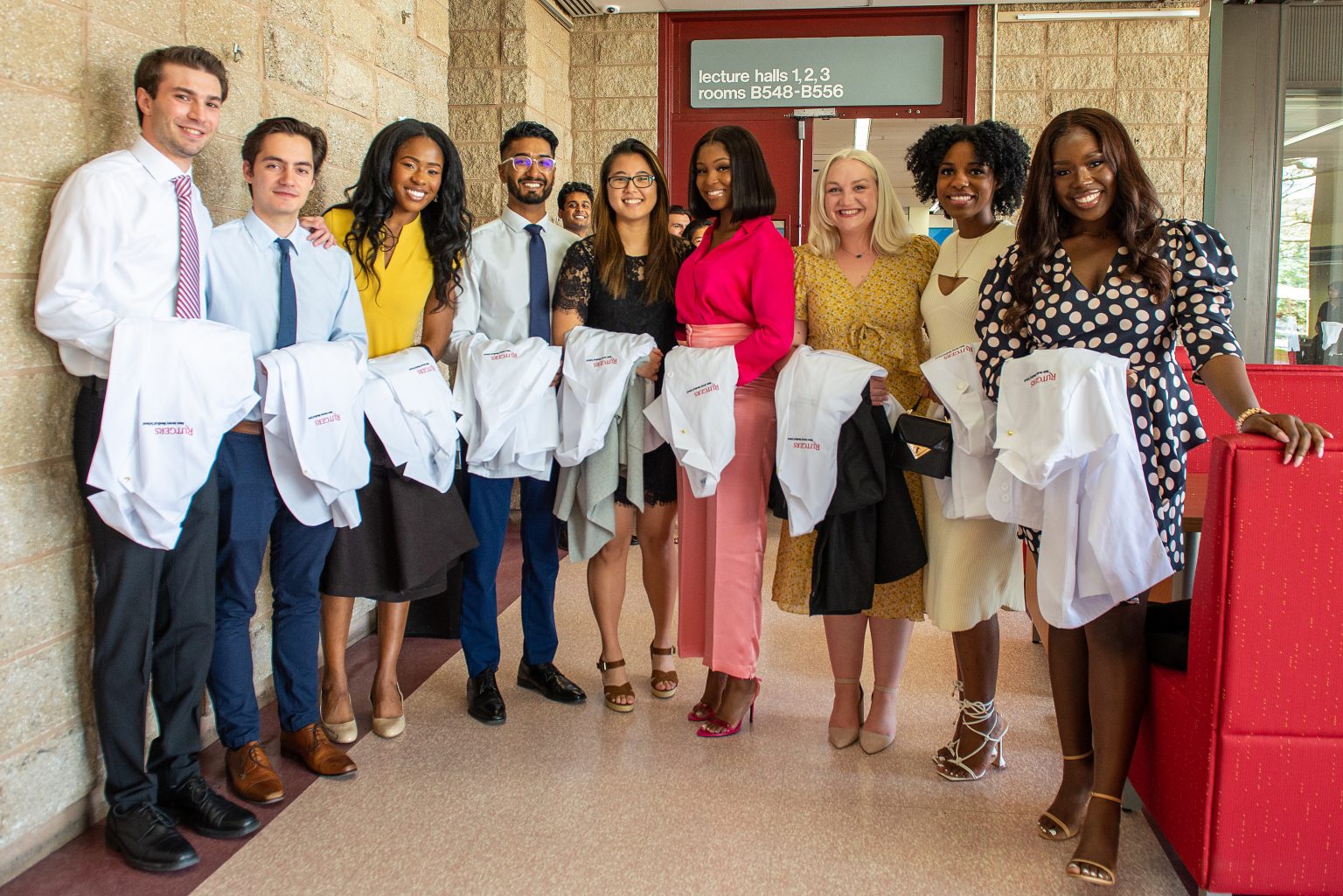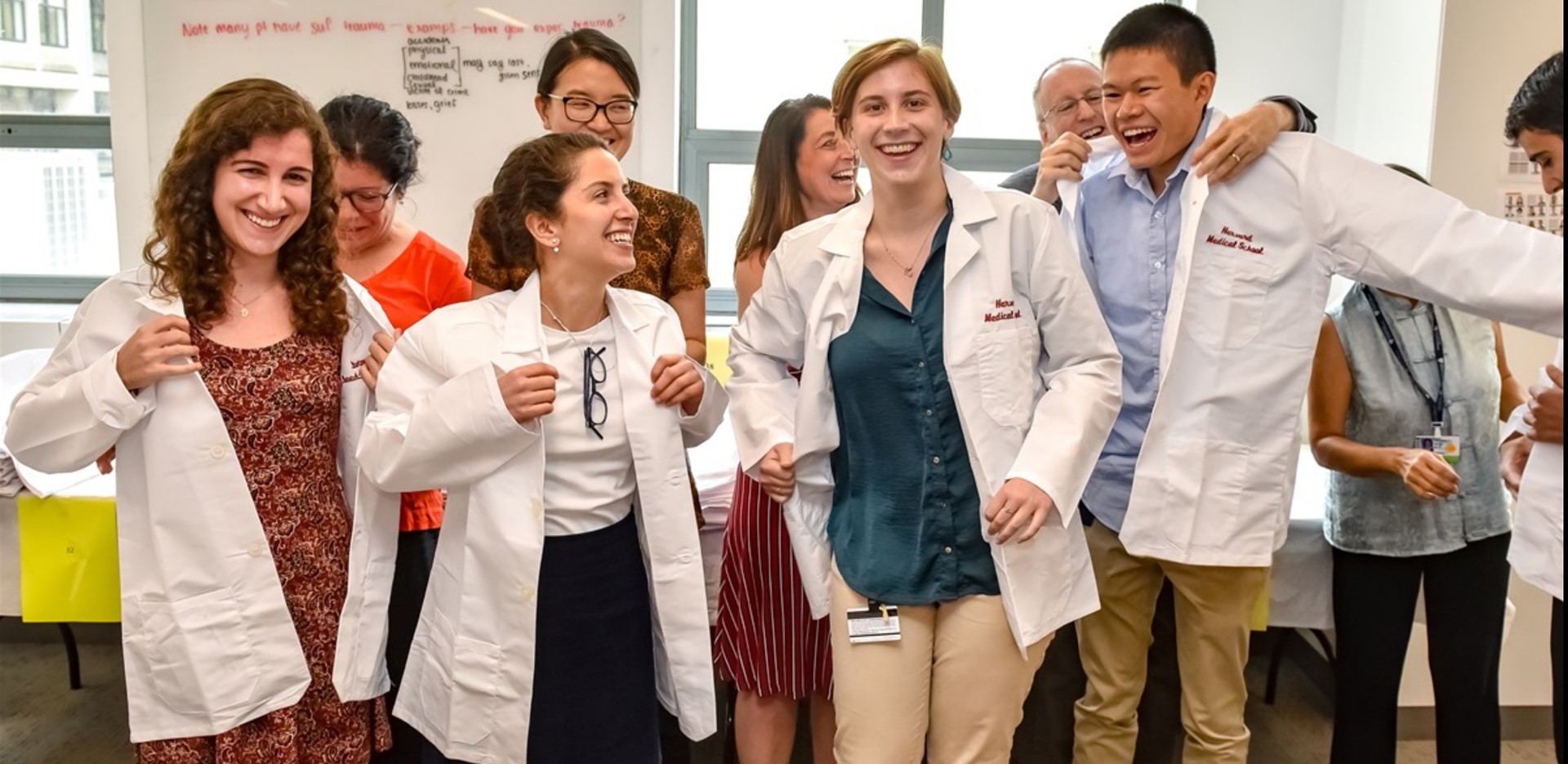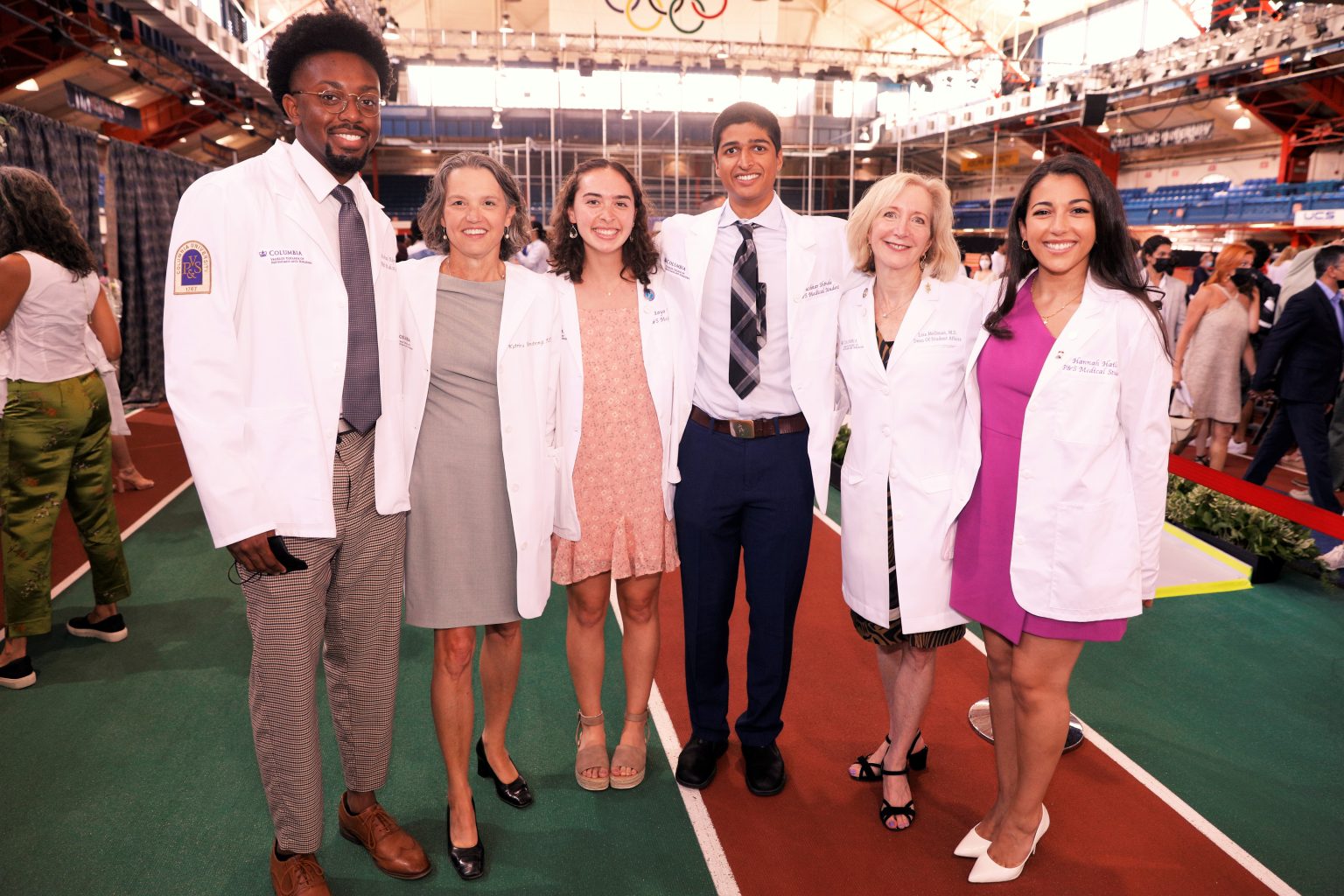White coat ceremonies (WCCs) are a beloved rite of passage that welcome new graduates into the medical profession and other health-related fields. During this ceremony, medical students are awarded their iconic white physicians’ coats before reciting the Hippocratic Oath—signifying their dedication to representing the ultimate symbol of authority and professionalism.
Most people have a pretty thorough understanding of how the average commencement ceremony goes, but, unless they know someone who’s earned a medical degree, they have yet to experience a white coat ceremony. Thankfully, we’re here to demystify this exciting event.
Uncovering the History of the White Coat Ceremony
The origins of the WCC can be traced back to the University of Chicago’s Pritzker School of Medicine in 1989. However, the first full-fledged white coat ceremony as we recognize it today was established by the Arnold P. Gold Foundation in 1993. At this event, Dr. Arnold P. Gold of Columbia University’s Vagelos College of Physicians and Surgeons started the tradition of students engaging with the Hippocratic Oath before starting their first year rather than only reading it during commencement.
The Spread of WCCs
Since its start at Columbia University, this new idea of white coat ceremonies quickly spread to other medical schools: pharmacy and dental programs, schools of nursing, optometry, and more worldwide. Countries like Brazil, Iran, Israel, the Dominican Republic, and Poland also adopted this practice, and by 2003, most schools in the U.S. had started hosting these ceremonies. Currently, 99% of U.S. medical colleges and 13 other countries host an Arnold P. Gold-sponsored version of the white coat ceremony. 1
The Origins of the White Coat
While it’s hard to imagine now, doctors and other medical professionals wore black regalia until the late 1800s, much like clergy members. At the time, the color black was (and still very much is) heavily associated with formalities and professionalism, and medical issues were seen as extremely somber matters. Modern medicine wasn’t as advanced as it is now, and most often, seeing a doctor was typically a last resort before death.
The idea of white coats on doctors started around 1889 when an American painter named Joseph Eakins depicted a doctor and his team of assistants in white attire, which jump started the idea of doctorhood being a sanitary profession. Throughout the late 1800s and early 1900s, the color white and the medical field became synonymous, and by the time the first established WCCs took place in the late 1900s, a medical student earning their coat signified their status as a true professional.
From the Blog
White coat ceremonies all achieve the same common goal, but they don’t have to be formulaic. Learn more about how your school can plan for a WCC that leaves lasting memories.

Image: The Arnold P. Gold Foundation
What Takes Place at a White Coat Ceremony?
The order of white coat ceremonies often starts on the same note as the average graduation ceremony, with honorary speakers and acknowledgements. However, the highlights of each ceremony are the cloaking procedure and recital of the Hippocratic Oath.
Typically, students are organized into small groups and cloaked with their white coats on the graduation stage. Schools use various officials to perform the honorary cloaking, such as advisors, faculty members, deans, distinguished alumni, and more. After all names have been called and students walk across the stage, each grad stands in front of a designated cloaker and they put their coats on in unison. If gifts are given, these are typically handed out as students exit the stage.
Once cloaking has ended and students receive their gifts, the new grads are directed to recite the Hippocratic Oath, which is the ultimate testament to ethics and maintaining a standard of patient-centered care. After this recital, the class is presented to the audience and the ceremony ends.
Common Professions that Partake in WCCs
There are plenty of disciplines in the healthcare and medical fields that take part in white coat ceremonies. A few of the most common professions are:
- Medicine
- Nursing
- Pharmacy
- Dentistry
- Physical Therapy
- Optometry
- Podiatry
- Occupational Therapy
It’s important to note that the specific disciplines included in a white coat ceremony may vary between institutions and regions. Some universities or colleges may also include other health-related fields or allied health professions in their white coat ceremonies—like schools offering physical therapy white coat ceremonies.
Additionally, many of these fields have their own ceremony variations. For example, white coat ceremonies for nurses often incorporate a pinning ceremony that symbolically welcomes nursing students anticipating graduation into the profession. This practice actually dates back much earlier than WCCs and started during the Crusades in the 12th century before later being repopularized by Queen Victoria.
The Future of White Coat Ceremonies
While a relatively young practice, white coat ceremonies have already become a staple of excellence and higher education. As they’ve spread throughout the United States and around the world, these ceremonies are likely to continue serving as a momentous occasion for aspiring healthcare professionals.
While no one knows for certain, we can possibly expect some modifications to reflect the changing landscape of medicine. With the advancements in technology and the rising importance of interdisciplinary collaboration, future white coat ceremonies might incorporate elements that emphasize teamwork, empathy, and adaptability. Additionally, as healthcare becomes more inclusive and diverse, these ceremonies may further celebrate the diversity of medical professionals and acknowledge the importance of cultural competence in providing quality care.
Overall, the future of white coat ceremonies holds the potential to foster a sense of community, resilience, and compassion among future healthcare providers.
Change the Statistics and Let StageClip Help Enhance Your Next White Coat Ceremony
An incredible 99% of Association of American Medical Colleges (AAMC)- accredited schools are hosting WCCs. 1 If you want your school to be a part of this metric, or you simply want to enhance your white coat ceremonies, let StageClip help transform your commencement ceremony into a moment your grads can relive as much as they’d like. With our personalized graduation video clips, your grad can get the perfect gift as they leave medical school and start a new journey.
Learn more about what we do and book a demo today!
StageClip is proud to have worked with John Hopkins Medical School and Harvard Medical School—two of the top medical institutions in the U.S.







